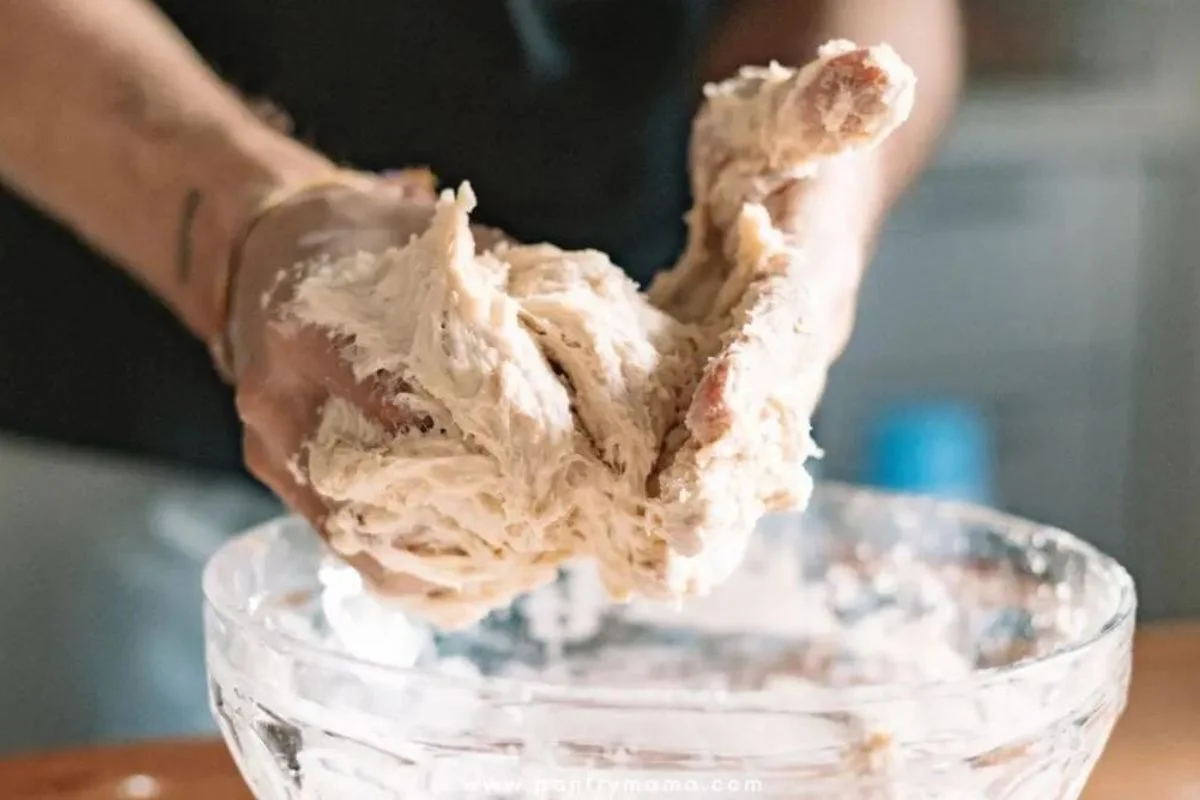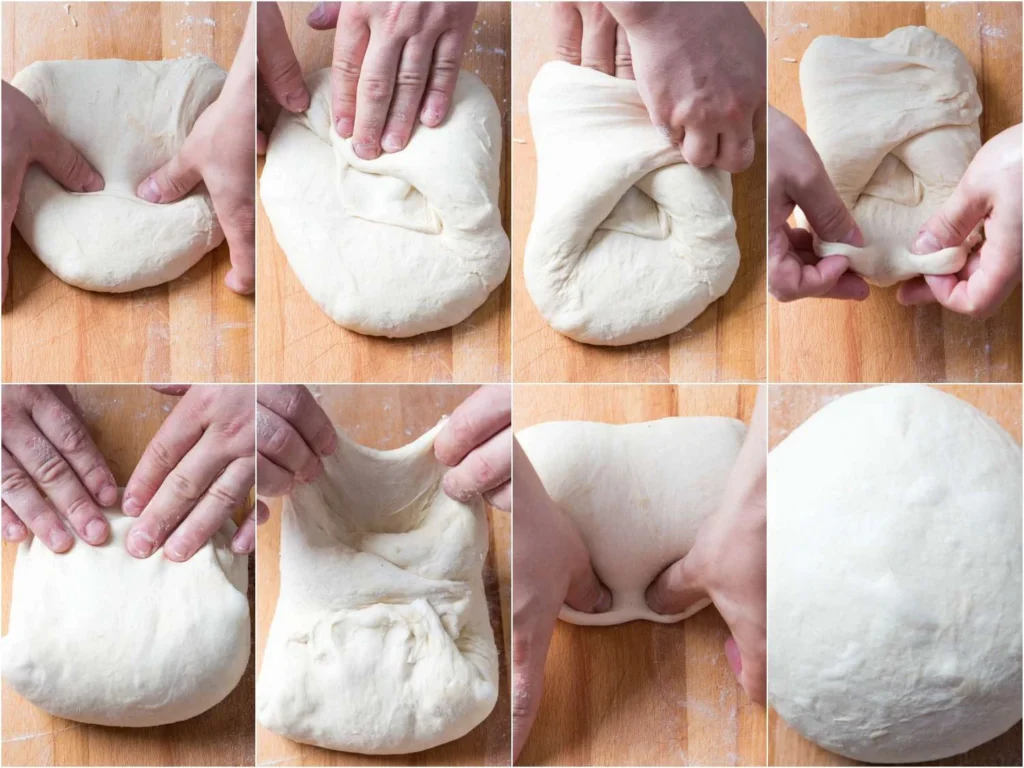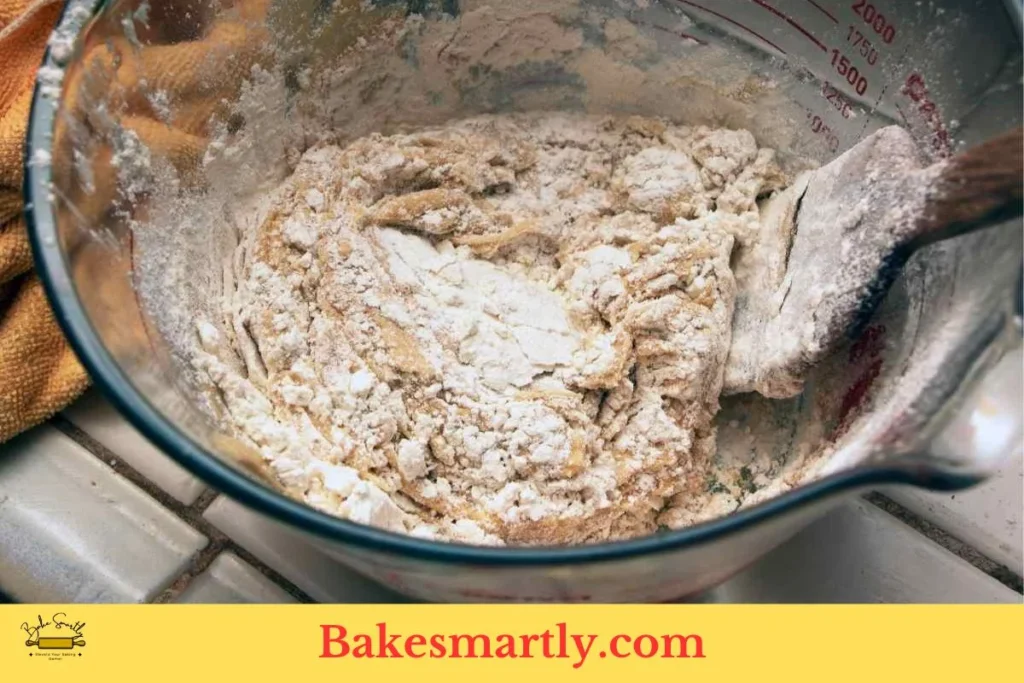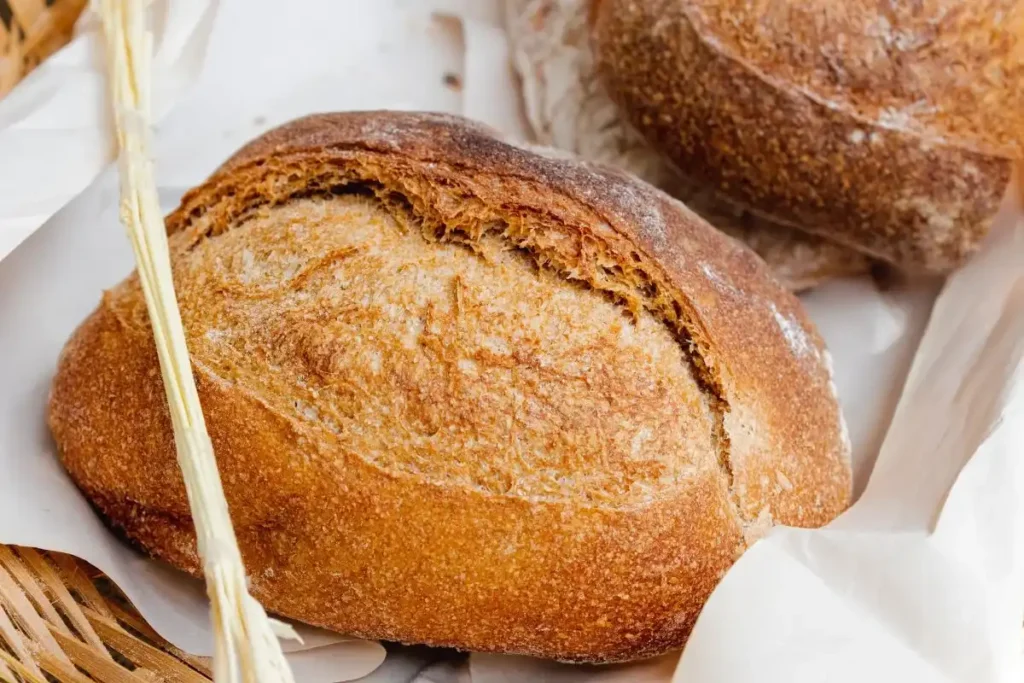
Why is My Sourdough Dough Sticky? 5 Common Issues and Fixes
Are you a passionate sourdough baker struggling with your dough sticking to everything? No need to worry; you’re not alone. Many bakers face this issue when working with sourdough, and it can be quite frustrating.
But fear not! In this article, we’ll explore why your sourdough is sticking and provide practical solutions to help you overcome this sticky situation. Let’s get started!
Table of Contents
ToggleReason 1: Insufficient Flour
Have you ever found yourself adding more and more flour to your sourdough dough, only to have it stick to your hands or the work surface? Well, the first reason why your sourdough is sticking to everything could be the insufficient amount of flour in your recipe. The dough needs enough flour to create the right consistency and prevent it from sticking excessively.
Solution: To fix this issue, make sure to follow your sourdough recipe carefully and measure the flour accurately. Use a kitchen scale for precise measurements, as using cups can result in varying amounts of flour. Additionally, consider adding a little extra flour gradually while kneading the dough until it reaches the desired non-sticky consistency.
Reason 2: High Hydration Level
Sourdough bread typically has a higher hydration level compared to other types of bread. The hydration level refers to the ratio of water to flour in the dough. Higher hydration doughs can be more challenging to handle and may stick more easily.
Solution: If your sourdough dough feels excessively sticky, the hydration level is likely too high. To address this, you can decrease the amount of water in your recipe slightly. Experiment with reducing the hydration level gradually until you achieve a dough that is easier to work with and less prone to sticking.

Reason 3: Insufficient Gluten Development
Gluten, a protein formed when wheat flour is combined with water, is responsible for giving bread its structure and elasticity. If your sourdough lacks proper gluten development, it can lead to a sticky and unmanageable dough.
Solution: To ensure sufficient gluten development, you can try the following techniques:
- Autolyse: Allow the flour and water to rest together for some time before adding the starter. This resting period allows the gluten strands to develop naturally, resulting in a stronger dough.
- Stretch and fold: Perform a series of gentle stretches and folds during the bulk fermentation stage. This technique helps strengthen the gluten structure and improves dough elasticity.
- Longer fermentation: Extend the fermentation time, allowing the natural enzymes in the sourdough to further develop the gluten and improve the overall texture of the bread.
By incorporating these techniques into your sourdough baking routine, you can promote better gluten development and reduce the stickiness of your dough.
Reason 4: Inadequate Surface Preparation
The surface on which you shape and proof your sourdough plays a significant role in preventing sticking. If the surface is not properly prepared, the dough may stick and become challenging to handle.
Solution: Consider the following tips for effective surface preparation:
- Flour or semolina: Dust your work surface with flour or semolina to create a protective barrier between the dough and the surface. This prevents excessive sticking during the shaping and transferring of the dough.
- Non-stick baking mat: Use a non-stick silicone baking mat or parchment paper to shape your dough. These non-stick surfaces make it easier to handle the dough without it sticking.
- Proofing basket: If you use a proofing basket (also known as a banneton), make sure to dust it generously with flour. This prevents the dough from sticking to the basket during the proofing process.
Proper surface preparation can make a world of difference in preventing your sourdough from sticking to everything.

Reason 5: Insufficient Dough Handling Techniques
The way you handle your sourdough during various stages of the baking process can significantly impact its stickiness. Improper techniques can lead to dough that sticks to your hands, utensils, or even the baking vessel.
Solution: Here are some helpful techniques to improve dough handling:
- Wet hands: Keep a small bowl of water nearby and wet your hands lightly before handling the dough. Moistening your hands prevents excessive sticking and allows you to shape the dough more easily.
- Use a bench scraper: A bench scraper is a handy tool for lifting and folding the dough during shaping. It also helps release any stuck dough from the work surface without excessive handling or adding more flour.
- Proper scoring: When scoring the dough before baking, ensure that the blade or knife is sharp and lightly floured. This prevents the blade from dragging through the dough and causing sticking.
By implementing these techniques and honing your dough-handling skills, you can minimize the stickiness of your sourdough and achieve better results.
How to Fix Sticky Dough After It Rises?
Running into sticky dough after it’s had time to rise can be pretty annoying, but don’t worry; your sourdough dreams aren’t shattered just yet. There are ways to deal with the stickiness and save your dough. Here’s how to tackle sticky dough after it’s done its thing:
- Add More Flour Gradually: First, lightly flour your work surface and your hands. Dump the sticky dough onto the floured surface and gently work in some extra flour. Be careful not to go overboard with the flour at once because you don’t want to make the dough too dry. Slowly add small amounts of flour until the dough gets to a workable texture. Remember, it’s easier to add more flour than fix a dough that’s too dry.
- Try the Stretch and Fold Trick: Give your dough a good stretch and fold several times. This move helps distribute the added flour and make the dough smoother. Keep folding until the dough stops being so sticky.
- Adjust the Wetness if Needed: If your dough is still too sticky even after you’ve added flour and folded, think about tweaking the wetness level. You can do this by gradually adding a bit more flour or water, depending on what’s needed. Small changes can make a big difference, so don’t rush, and keep an eye on the dough’s consistency.
- Be Patient: Sometimes, sticky dough just needs more time to chill out. Let it rest a little longer, and the gluten in the dough will continue to develop, which should make it less sticky.
- Flour Up Your Proofing Basket: If you’re using a fancy proofing basket (also known as a banneton), make sure you give it a good dusting with flour before plopping your dough in there for its final rise. This stops the dough from sticking to the basket while it proofs.
- Think About Refrigeration: In certain situations, sticking your dough in the fridge for a bit can do wonders for its texture. Cold dough is easier to handle and less likely to stick. Pop your dough in the fridge for about 20-30 minutes, then get back to shaping and baking.
Why Is My Sourdough So Sticky After Proofing?
Encountering sticky sourdough after the proofing stage can be a common issue, and understanding the reasons behind it can help you address the problem effectively. Several factors can contribute to sticky dough after proofing.
One significant factor is the dough’s high hydration level. Sourdough bread typically has a higher hydration level compared to other bread types, which means it contains more water relative to the amount of flour used. This higher hydration is responsible for the characteristic open crumb and chewy texture of sourdough. However, it also makes the dough more prone to stickiness.
Another reason for sticky dough after proofing may be insufficient gluten development. Proper gluten formation is crucial for giving the dough structure and elasticity. If the gluten hasn’t developed adequately during earlier stages, the dough can remain sticky even after proofing.
Additionally, overproofing can lead to increased stickiness. When sourdough overferments, it becomes more fragile, and its structure can break down. This can result in a dough that feels excessively sticky and difficult to handle.
To address sticky dough after proofing, consider gently folding and shaping the dough, using a well-floured work surface, and practicing patience. Sometimes, a bit of extra flour or a shorter fermentation period can help manage the stickiness.

What Happens When You Bake Dough That’s Too Sticky?
Baking dough that’s too sticky can cause some challenges and unwanted results in your homemade sourdough bread. It’s important to know what might go wrong when dealing with sticky dough so you can make better choices when baking.
Here’s what can happen if you bake dough that’s too sticky:
- Uneven Texture: Sticky dough is tough to handle, making it hard to shape the bread properly. When the dough isn’t shaped right, you might end up with uneven texture in the finished loaf. You could have parts that are denser or airier, which can affect how your bread tastes and feels.
- Poor Rise: Sticky dough may not rise well during baking. The extra moisture can slow down the yeast’s work, which means your dough won’t puff up as much as you’d like. Instead of getting light and airy sourdough, you might end up with a flatter, denser bread.
- Sticking to the Pan: When you put sticky dough onto a baking surface like a Dutch oven or a baking stone, it might stick and get stuck there. This can make it tricky to get your bread out after baking, and it could mess up how your loaf looks and holds together.
- Trouble Scoring: Scoring, which is when you make shallow cuts on the dough’s surface before baking, can be tough with sticky dough. The knife might drag through the dough instead of giving you clean, fancy cuts, and that can affect how your bread looks.
- Flavor Inconsistencies: Getting the right flavor in your sourdough bread relies on having the right dough texture and structure. Sticky dough may not ferment evenly, which can make the taste uneven too. Some parts might not taste quite ready, while others could be extra tangy.
- Extra Chewy Crust: Dough that’s too sticky can lead to a crust that’s way too chewy. If the dough sticks to the pan or basket during baking, it can create a dense, chewy layer on the outside that’s not as enjoyable to bite into as a well-structured crust.
How to Fix Sticky Dough Without Flour?
While adding more flour is often the go-to solution for sticky sourdough dough, there are alternative methods you can employ to address the stickiness without increasing the flour content. Here are some techniques to help you achieve non-sticky sourdough:
- Adjust Hydration Gradually: Instead of adding more flour, consider gradually adjusting the hydration level of your dough. You can reduce stickiness by incorporating a bit less water into your recipe. Be cautious when doing this, as small changes in hydration can have a significant impact on the dough’s texture. Make adjustments slowly and monitor the dough closely during mixing and kneading.
- Incorporate Fold and Rest Cycles: Introducing fold and rest cycles during the bulk fermentation stage can help improve dough consistency. After mixing your dough, allow it to rest for about 30 minutes, then perform a series of gentle stretches and folds. This technique enhances gluten development and can reduce stickiness without the need for extra flour.
- Use Wet Hands or Oiled Tools: Instead of flouring your hands or utensils, you can keep a bowl of water nearby to wet your hands lightly when handling the dough. This moisture creates a barrier between your hands and the sticky dough, making it easier to work with. Alternatively, you can lightly oil your hands and tools to prevent sticking.
- Experiment with Alternative Flours: If you’re looking to avoid adding more wheat flour, consider experimenting with alternative flours like rice flour, rye flour, or semolina for dusting your work surface. These flours can help prevent sticking and add unique flavors and textures to your sourdough.
Frequently asked questions about sourdough Sticking
Why is my sourdough still sticky after adding more flour?
Adding more flour to your sourdough dough can help reduce stickiness, but it’s essential to do it gradually. If the dough is still sticky after adding more flour, it could indicate other factors contributing to the stickiness, such as high hydration or inadequate gluten development.
Can I use oil instead of flour to prevent sticking?
While oil can provide a non-stick surface, it may alter the texture and characteristics of the dough. It is generally recommended to use flour or other flour alternatives, such as semolina or cornmeal, to prevent sticking without compromising the dough’s quality.
Can humidity affect dough stickiness?
Yes, humidity can impact the stickiness of your sourdough dough. In humid environments, the dough can retain more moisture, leading to stickier dough. Adjusting the amount of water in your recipe or adding a little extra flour may help counterbalance the effects of humidity.
Is it normal for sourdough to be sticky?
Sourdough typically has a slightly stickier consistency compared to other bread doughs due to its higher hydration level and unique fermentation process. However, excessive stickiness can indicate an issue with the dough, such as insufficient flour or inadequate gluten development.
Conclusion
Baking sourdough is a rewarding and enjoyable process, but dealing with a sticky dough can be frustrating. By understanding the reasons behind your sourdough sticking to everything and implementing the suggested solutions, you can overcome this challenge and create beautiful, non-sticky loaves of sourdough bread.
Remember to pay attention to factors such as flour quantity, hydration level, gluten development, surface preparation, and dough handling techniques. With a little practice and patience, you’ll soon be baking sourdough that doesn’t stick to everything and delights your taste buds. Happy baking!
Lindsey Mackenzie
About me
Hi there! I’m Lindsey Mackenzie, the founder of Bake Smartly. Baking has been my passion since childhood, growing up in my father’s bakery. With Bake Smartly, I’m excited to share my love for all things sweet and savory. Join me on this delicious journey as we whip up scrumptious treats and sprinkle joy into every bite!






